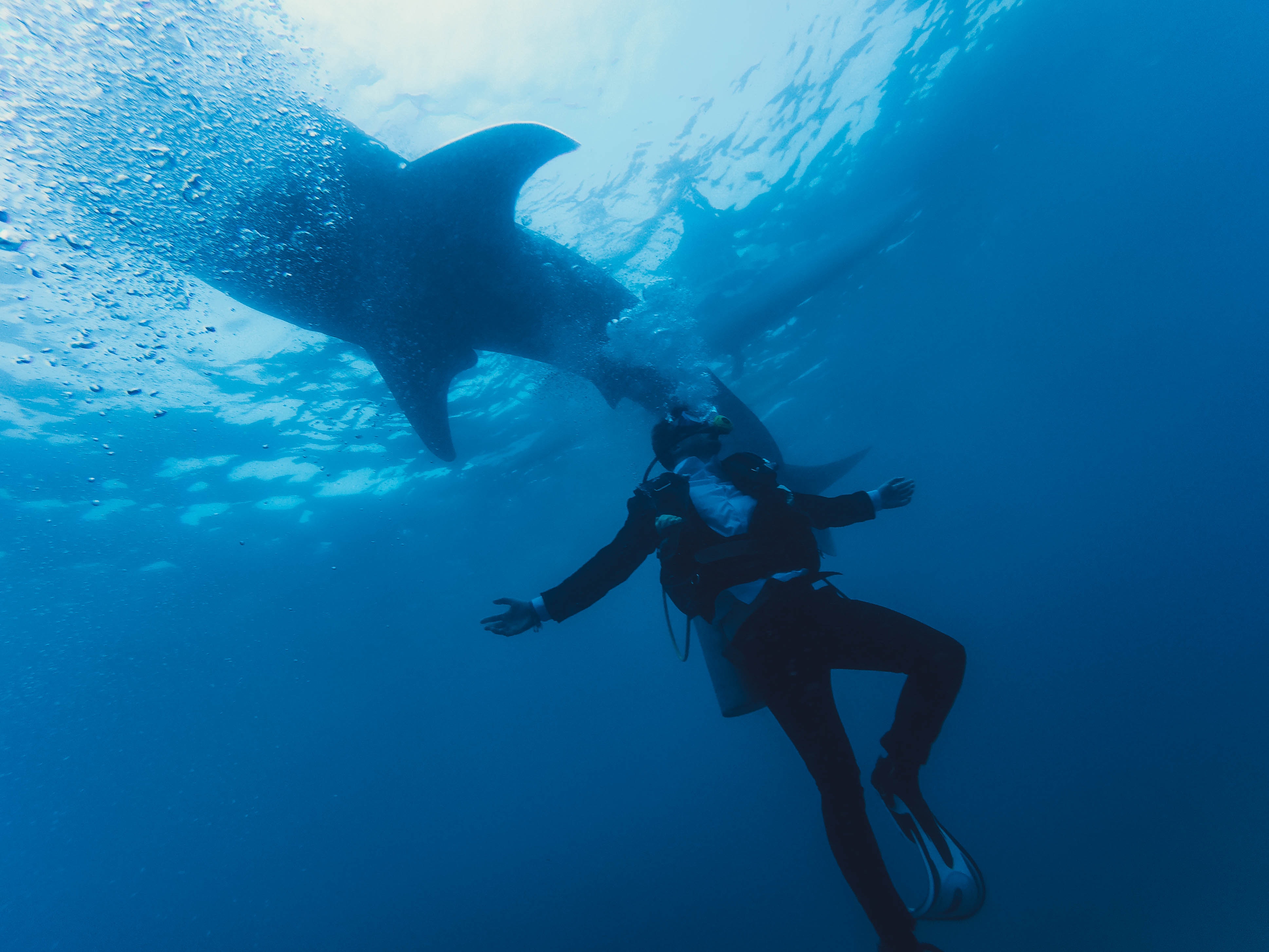Dangerous attraction
Balancing species protection and responsible tourism
Attrazioni pericolose
Salvaguardia di una specie e turismo responsabile


Ogni anno, tra luglio e ottobre, diversi esemplari di squalo grigio si radunano intorno alla piccola e remota Isola di Lampione, nell’Area Marina Protetta delle Isole Pelagie. Questo fenomeno, molto raro nel Mar Mediterraneo, è stato studiato per la prima volta da un gruppo di ricercatori dell’Università di Palermo, che per due anni hanno filmato gli squali nel loro ambiente naturale, documentandone il comportamento e le interazioni con subacquei e diportisti.
Lo squalo grigio, nome scientifico Carcharhinus plumbeus, è una specie innocua per l’uomo ma gravemente minacciata da attività di pesca e dalla distruzione degli habitat. Per questo motivo è classificata come specie “in pericolo di estinzione” nel Mar Mediterraneo dall’Unione Internazionale per la Conservazione della Natura.
“Se intensamente disturbati da subacquei e imbarcazioni, gli squali si mostrano più nervosi ed intimoriti sino ad abbandonare i fondali dell’isola, probabilmente dirigendosi in acque più profonde o verso zone in cui sono più vulnerabili alla pesca” afferma il prof. Marco Milazzo, responsabile del progetto.
“Per evitare che questo avvenga il nostro progetto propone l’applicazione di un codice di condotta, rivolto a diportisti e subacquei, per promuovere comportamenti responsabili che riducano al minimo le interazioni negative tra gli squali e l’uomo” aggiunge il dott. Carlo Cattano.
“Utilizzando sistemi di campionamento video, questionari per subacquei, pescatori e turisti, ed incontri pubblici di informazione e sensibilizzazione, vorremmo promuovere un approccio in cui ricercatori, gestori dell’Area Marina Protetta, operatori diving, e turisti collaborano per proteggere questo squalo in pericolo di estinzione” conclude il dott. Gabriele Turco.
Autore del post: Comunicato stampa Università degli studi di Palermo
Istituto di appartenenza: Al momento non lavoro per nessun itistuto (in cerca di lavoro/affiliazione).
Ruolo: Press Officer
Doi originale: https://doi.org/10.1002/aqc.3517
Link diretto alla fonte: https://onlinelibrary.wiley.com/doi/epdf/10.1002/aqc.3517
Articolo Divulgativo in Inglese:
Every year, between July and October, many Sandbar sharks meet around the islet of Lampione, in the Marine Protected Area of Pelagie Islands (Sicily). For the first time, researchers from the University of Palermo studied this rare phenomenon in the Mediterranean Sea by filming for two years shark’s behaviour and interactions with divers and yachtsmen. The scientific name of the Sandbar shark is Carcharhinus plumbeus. It is harmless for humans but is classified as a “danger of extinction” species because of fishing and human actions against its habitat. “If bothered by divers and boats, these sharks become nervous and frightened since they leave those backdrops. They might move to either deeper waters or more dangerous fishing areas” says professor Marco Milazzo. “To avoid it, our project proposes the application of a behavioural code for yachtsmen and divers to both promote responsible behaviours and reduce the negative interactions between sharks and humans” adds Dr. Carlo Cattano. “By using videos, surveys for divers, fishermen, and tourists, and public meeting to inform and sensibilize people, we would like to promote a collaboration between researchers, Marine Protected Area managers, divers, and tourists to protect this shark from the danger of extinction” ends Dr. Gabriele Turco.



